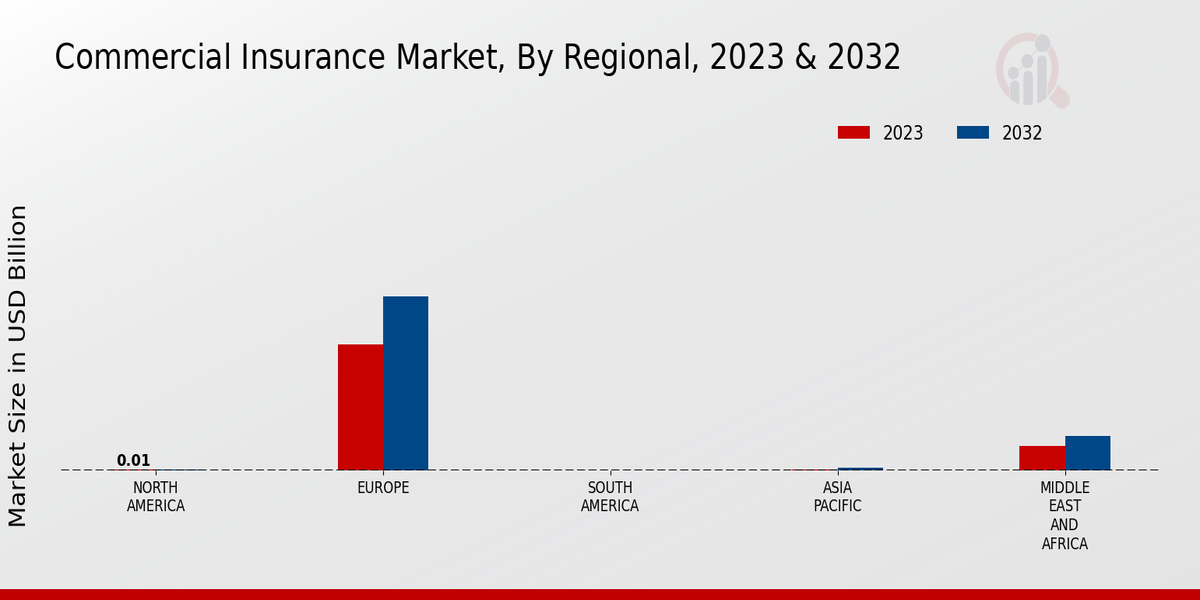Global Economic Growth
The Global Commercial Insurance Market Industry is poised for growth as global economic conditions improve. Economic expansion typically leads to increased business activities, resulting in higher demand for insurance products. As companies invest in new ventures and expand their operations, they require comprehensive coverage to protect against potential risks. The projected compound annual growth rate of 9.01% from 2025 to 2035 indicates a robust market trajectory, driven by economic recovery and growth. This economic momentum suggests that businesses will increasingly prioritize risk management strategies, thereby fueling the demand for commercial insurance solutions.
Market Growth Projections
Rising Business Complexity
The Global Commercial Insurance Market Industry is experiencing growth due to the increasing complexity of business operations. As companies expand their activities across borders and diversify their services, they face a myriad of risks that necessitate comprehensive insurance coverage. This complexity is reflected in the projected market size of 933.9 USD Billion in 2024, indicating a robust demand for tailored insurance solutions. Businesses are increasingly aware of the need to protect their assets, employees, and operations, which drives the demand for various commercial insurance products. This trend suggests that as businesses evolve, so too will their insurance needs, further propelling market growth.
Technological Advancements
Technological innovations are reshaping the Global Commercial Insurance Market Industry, enabling insurers to offer more efficient and customized products. The integration of artificial intelligence, big data analytics, and machine learning allows for better risk assessment and pricing strategies. For instance, insurers can analyze vast amounts of data to identify emerging risks and tailor policies accordingly. This technological shift is expected to contribute to the market's growth, with projections indicating a market size of 2413.5 USD Billion by 2035. As technology continues to evolve, it is likely that the insurance industry will adapt, enhancing customer experiences and operational efficiencies.
Increased Regulatory Compliance
The Global Commercial Insurance Market Industry is significantly influenced by the growing emphasis on regulatory compliance across various sectors. Governments worldwide are implementing stricter regulations to ensure businesses operate within legal frameworks, which often necessitates specific insurance coverage. For example, industries such as healthcare and finance face stringent compliance requirements that drive demand for specialized insurance products. This regulatory landscape is expected to contribute to the market's expansion, as businesses seek to mitigate risks associated with non-compliance. As the regulatory environment continues to evolve, the demand for commercial insurance is likely to increase, further propelling market growth.
Emerging Risks and Cybersecurity Threats
The Global Commercial Insurance Market Industry is increasingly shaped by the emergence of new risks, particularly in the realm of cybersecurity. As businesses become more reliant on digital technologies, they face heightened vulnerabilities to cyberattacks and data breaches. This evolving risk landscape necessitates specialized insurance products designed to address these threats. The growing awareness of cybersecurity risks is likely to drive demand for cyber insurance policies, contributing to the overall market growth. As businesses seek to safeguard their digital assets and maintain customer trust, the importance of comprehensive insurance coverage in mitigating these risks becomes paramount.




















